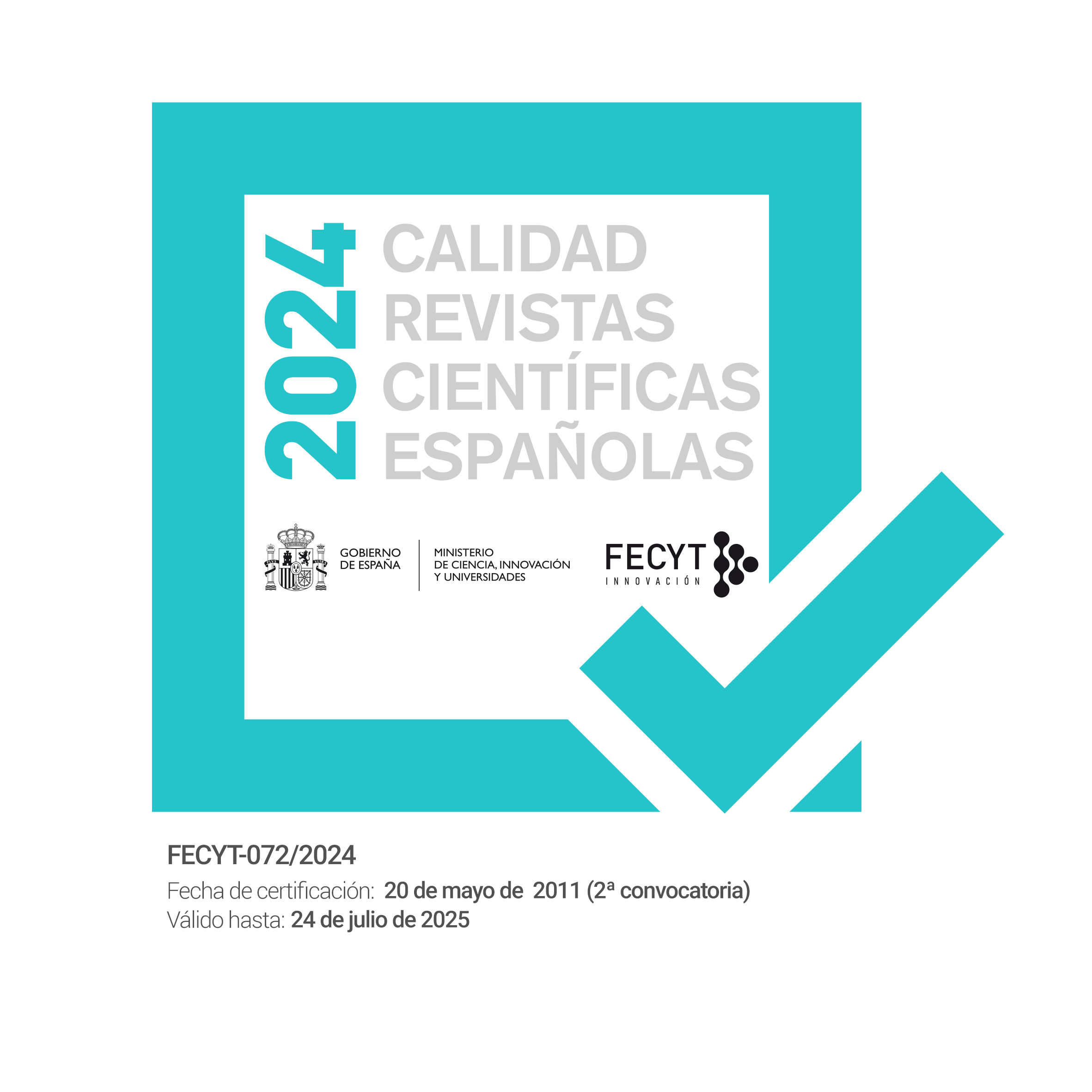Estudios bioecológicos y moleculares de Heliothis nubigera Herrich-Schäffer, 1851 y Trichoplusia ni (Hübner, [1803]) asociados a Ferula communis L. como nuevo hospedante en AlUla, Arabia Saudita (Lepidoptera: Noctuidae)
DOI:
https://doi.org/10.57065/shilap.897Palabras clave:
Lepidoptera, Noctuidae, Heliothis nubigera, Trichoplusia ni, Ferula communis, gen mitocondrial COI, interacción insectos con plantas, Arabia SaudíResumen
Heliothis nubigera Herrich-Schäffer, 1851 y Trichoplusia ni (Hübner, [1803]) (Lepidoptera: Noctuidae) son graves polífagos de cultivos económicos que buscan un hospedador para completar su ciclo biológico. El presente estudio se llevó a cabo para estimar la relación entre Heliothis nubigera y Trichoplusia ni con Ferula communis L. en dos localidades, Hassat Al-dab y Almotadal, Gobierno de AlUla, Almadina Almunawarah, Arabia Saudí. Se aisló el ADN genómico de Heliothis nubigera y Trichoplusia ni para su identificación molecular. Los resultados indican que Heliothis nubigera y Trichoplusia ni completan sus estadios larvarios durante el crecimiento de Ferula communis. La identificación molecular mediante secuenciación génica del fragmento diana de la COI mostró una identidad del 100% con Heliothis nubigera, con el número de acceso HM875008.1, y del 98,44% con Trichoplusia ni, con el número de acceso KX862907.1. KX862907.1 mediante BLAST/N. El estudio concluye que el fragmento diana del gen mitocondrial COI es un método útil para la identificación de Heliothis nubigera y Trichoplusia ni. El estudio registró que Heliothis nubigera y Trichoplusia ni utilizan Ferula communis como nueva planta huésped localizada en Hassat Al-dab y Almotadal, Gobierno de AlUla, Arabia Saudí.
Descargas
Estadísticas globales ℹ️
|
641
Visualizaciones
|
204
Descargas
|
|
845
Total
|
|
Citas
Alansari, R. M., Seleem, A. A., & Hussein, B. H. (2024). Recording insect death and essential oil composition of Ferula communis L. flowers in AlUla, Kingdom of Saudi Arabia. Kuwait Journal of Science, 51(2), 100171. DOI: https://doi.org/10.1016/j.kjs.2023.100171
Adjei-Maafo, I. K. (1980). Effects of nectariless cotton trait on insect pests, parasites, and predators with special reference to the effects on the reproductive characteristics of Heliothis spp. (Ph. D. Thesis). University of Queensland.
Adjei-Maafo, I. K., & Wilson, L. T. (1983). Association of cotton nectar production with Hellothis punctigera (Lepidoptera: Noctuidae) oviposition. Environmental Entomology, 12, 1166-1170. https://doi.org/10.1093/ee/12.4.1166 DOI: https://doi.org/10.1093/ee/12.4.1166
Amer, A. M., & El Torkey, A. M. (2019). Revision of Subfamilies “Acronictinae, Heliothinae, Metoponiinae, Noctuinae, Oncocnemidinae and Plusiinae” of Egypt (Lepidoptera, Noctuidae). Egyptian Academic Journal of Biological Sciences. A, Entomology, 12(5), 29-67. https://doi.org/10.21608/eajbsa.2019.52314 DOI: https://doi.org/10.21608/eajbsa.2019.52314
Anzalone, B., Lattanzi, E., & Leporatti, M. L. (1991). Il gruppo di Ferula communis L. (Umbelliferae) in Italia: ricerche sistematiche e corologiche. Archivio Botanico Italiano, 67(3/4), 221-236.
Berenbaum, M. (1983). Coumarins and caterpillars: a case for coevolution. Evolution, 37, 163-179. https://doi.org/10.1111/j.1558-646.1983.tb05524.x PMid:28568024 DOI: https://doi.org/10.1111/j.1558-5646.1983.tb05524.x
Berenbaum, M. R. (1990). Evolution of specialization in insect-umbellifer associations. Annual review of entomology, 35(1), 319-343. https://doi.org/10.1146/annurev.en.35.010190.001535 DOI: https://doi.org/10.1146/annurev.ento.35.1.319
Berenbaum, M. R., Bush, D. S., & Liao, L. H. (2021). Cytochrome P450-mediated mycotoxin metabolism by plantfeeding insects. Current Opinion in Insect Science, 43, 85-91. https://doi.org/10.1016/j.cois.2020.11.007 PMid:33264684 DOI: https://doi.org/10.1016/j.cois.2020.11.007
Bull, D. L., Ivie, G. W., Beier, R. C., & Pryor, N. W. (1986). In vitro metabolism of a linear furanocoumarin (8-methoxypsoralcn, xanthotoxin) by mixedfunction oxidases of larvae of black swallowtail butterfly and fall armyworm. Journal of Chemical Ecology, 12, 885-92. https://doi.org/10.1007/BF01020258 PMid:24306976 DOI: https://doi.org/10.1007/BF01020258
Camm, E. L., War, C.-K., & Towers, G. H. N. (1976). An assessment of the roles of furanocoumarins in Heracleum lanaturn. Canadian Journal of Botany, 54, 2562-2566. https://doi.org/10.1139/b76-275 DOI: https://doi.org/10.1139/b76-275
Capinera, J. (2001). Handbook of Vegetable Pests. Academic Press.
Caron, V., & Myers, J. H. (2008). Positive association between resistance to Bacillus thuringiensis and overwintering survival of cabbage loopers, Trichoplusia ni (Lepidoptera: Noctuidae). Bulletin of Entomological Research, 98, 317-322. https://doi.org/10.1017/S0007485307005597 PMid:18257958 DOI: https://doi.org/10.1017/S0007485307005597
Cervantes, V. M., Sarfraz, R. M., & Myers, J. H. (2011). Survival of cabbage looper, Trichoplusia ni (Lepidoptera: Noctuidae), through winter cleanups of commercial vegetable greenhouses: Implications for insecticide resistance management. Crop Protection, 30(8), 1091-1096. https://doi.org/10.1016/j.cropro.2011.03.021 DOI: https://doi.org/10.1016/j.cropro.2011.03.021
Chomchalow, N. (2003). Protection of Stored Products with Special Reference to Thailand. ABAC Journal, 7, 34-47.
Cullen, J. M. (1969). The reproduction and survival of Heliothis punctigera Wallengren in South Australia (Ph. D. Thesis). University of Adelaide.
Cunningham, J. P., & Zalucki, M. P. (2014). Understanding Heliothine (Lepidoptera: Heliothinae) pests: what is a host plant? Journal of Economic Entomology, 107(3), 881-896. https://doi.org/10.1603/EC14036 PMid:25026644 DOI: https://doi.org/10.1603/EC14036
Dethier, V. G. (1970). Chemical interactions between plants and insects. In E. Sandheimer & J. Simeone ed. Chemical Ecology (pp. 83-102). New York Academic. https://doi.org/10.1016/B978-0-12-654750-4.50011-6 DOI: https://doi.org/10.1016/B978-0-12-654750-4.50011-6
Dethier, V. G. (1973). Electrophysiological studies of gustation in lepidopterous larvae. II. Taste spectra in relation to food-plant discrimination. Journal of comparative physiology, 82, 103-34. https://doi.org/10.1007/BF00696148 DOI: https://doi.org/10.1007/BF00696148
Feeny, P., Sachdev, K., Rosenberry, L., & Carter, M. (1988). Luteolin 7-0-(6’-0- malonyl)-beta-D-glucoside and transchlorogenic acid: oviposition stimulants for the black swallowtail butterfly. Phytochemistry, 27, 3439-8. https://doi.org/10.1016/0031-9422(88)80745-3 DOI: https://doi.org/10.1016/0031-9422(88)80745-3
Fening, K., Amoabeng, B., Adama, I., Mochiah, M., Braimah, H., Owusu-Akyaw, M., Narveh, E., & Ekyem, S. (2013). Sustainable management of two key pests of cabbage, Brassica oleracea var. capitata L.(Brassicaceae), using homemade extracts from garlic and hot pepper. Organic agriculture, 3, 163-173. https://doi.org/10.1007/s13165-014-0058-2 DOI: https://doi.org/10.1007/s13165-014-0058-2
Fernch, D. (1971). Ethnobotany of the Umbelliferae. In V. H. Heywood, ed. The Chemistry and Biology of the Umberifella (pp. 285-412). Academic Press.
Folmer, O., Black, M., Hoeh, W., Lutz, R., & Vrijenhoek, R. (1994). DNA primers for amplification of mitochondrial cytochrome c oxidase subunit I from diverse metazoan invertebrates. Molecular marine biology and biotechnology, 3, 294-299.
Franklin, M. T., Ritland, C. E., & Myers, J. H. (2011). Genetic analysis of cabbage loopers, Trichoplusia ni (Lepidoptera: Noctuidae), a seasonal migrant in western North America. Evolutionary Applications, 4(1), 89-99. https://doi.org/10.1111/j.1752-4571.2010.00135.x PMid:25567955 PMCid:PMC3352513 DOI: https://doi.org/10.1111/j.1752-4571.2010.00135.x
Gripenberg, S., Mayhew, P. J., Parnell, M., & Roslin, T. (2010). A meta-analysis of preference-performance relationships in phytophagous insects. Ecology Letters, 13, 383-393. https://doi.org/10.1111/j.14610248.2009.01433.x PMid:20100245 DOI: https://doi.org/10.1111/j.1461-0248.2009.01433.x
Guerin, P, M., & Visser, J. H. (1980). Electroantennogram responses of the carrot fly, Psila rosae, to volatile plant components. Physiological Entomology, 5, 111- 120. https://doi.org/10.1111/j.1365-3032.1980.tb00218.x DOI: https://doi.org/10.1111/j.1365-3032.1980.tb00218.x
Guerin, P. M., & Stadler, E. (1984). Carrot fly cultivar preferences: some influencing factors. Ecological Entomology, 9, 413-420. https://doi.org/10.1111/j.1365-2311.1984.tb00838.x DOI: https://doi.org/10.1111/j.1365-2311.1984.tb00838.x
Hassan, S. T. S. (1985). Distribution of Heliothis arnigera (Hubner) and Heliothis punctigera (Wallengren) (Lepidoptera: Noctuidae) eggs and larvae, and insecticide spray droplets on cotton plants (Ph.D. Thesis). University of Queensland.
Hegnauer, R. (1971). Chemical patterns and relationships of Umbelliferae. In In V. H. Heywood (ed.). The Biology and Chemistry of the Umbelliferae (pp. 267-277). Academic Press Inc.
Herrich-Schäffer, G. A. W. (1851). Nachtrag zum ersten Bande. Systematische Bearbeitung der Schmetterlinge von Europa, zugleich als Text, Revision und Supplement zu Jakob Hübner’s Sammlung europäischer Schmetterlinge (Vol. 6). G. J. Manz.
Ivie, G, W., Bull, D. L., Bcicr, R. C., Pryor, N. W., & Oertli, E. H. (1983). Metabolic detoxification: mechanisms of insect resistance to plant psoralens. Science, 221, 374-76. https://doi.org/10.1126/science.221.4608.374 PMid:17798893 DOI: https://doi.org/10.1126/science.221.4608.374
Kharchoufa, L., Bouhrim, M., Bencheikh, N., Addi, M., Hano, C., Mechchate, H., & Elachouri, M. (2021). Potential Toxicity of Medicinal Plants Inventoried in Northeastern Morocco: An Ethnobotanical Approach. Plants, 10(6), 1108. https://doi.org/10.3390/plants10061108 PMid:34072709 PMCid:PMC8226742 DOI: https://doi.org/10.3390/plants10061108
Kravchenko, V. (1984). Behavior of the cotton bollworm (Heliothis armigera) in natural conditions. Zoologichesky Zhurnal, 63(5), 682-686.
Kravchenko, V. D., Orlova, O. B., Fibiger, M., Ronkay, L., Mooser, J., Li, C., & Muller, G. C. (2005). The Heliothinae of Israel (Lepidoptera: Noctuidae). SHILAP Revista de lepidopterología, 33(131), 365-374.
Lahmar, R., Mahjoub, T., Fourel, I., Gault, G., & Grancher, D. (2018). Giant fennel (Ferula communis L) intoxication in goats in Tunisia. Veterinary Record Case Reports, 6(4), e000738. https://doi.org/10.1136/vetreccr-2018-000738 DOI: https://doi.org/10.1136/vetreccr-2018-000738
Leite, N. A., Alves-Pereira, A., Corrêa, A. S., Zucchi, M. I., & Omoto, C. (2014). Demographics and genetic variability of the new world bollworm (Helicoverpa zea) and the old world bollworm (Helicoverpa armigera) in Brazil. PloS one, 9(11), e113286. https://doi.org/10.1371/journal.pone.0113286 PMid:25409452 PMCid:PMC4237417 DOI: https://doi.org/10.1371/journal.pone.0113286
Mabbett, T. H., & Nachapong, M. (1983). Some aspects of oviposition by Heliothis arrnigera pertinent to cotton pest management in Thailand. International Journal of Pest Management, 29(2), 159-165. https://doi.org/10.1080/09670878309370792 DOI: https://doi.org/10.1080/09670878309370792
Madden, T. (2002). The BLAST Sequence Analysis Tool In: J. McEntyre & J. Ostell editors. The NCBI Handbook [Internet]. National Center for Biotechnology Information (US).
Manjunath, T. M., Bhatnagar, V. S., Pawar, C. S., & Sithanantham, S. (1989). Economic importance of Heliothis spp. in India and an assessment of their natural enemies and host plants. In Proceedings of the Workshop on Biological Control of Heliothis: Increasing the Effectiveness of Natural Enemies, New Delhi, India, 11-15 November 1985. Office of International Cooperation & Development.
Matov, A., Zahiri, R., & Holloway, J. D. (2008). The Heliothinae of Iran (Lepidoptera: Noctuidae). Zootaxa,1763(1), 1-37. https://doi.org/10.11646/zootaxa.1763.1.1 DOI: https://doi.org/10.11646/zootaxa.1763.1.1
Matthews, M. (1991). Classification of the Heliothinae. Bulletin of Natureal Resources Institute, 44, 1-195.
Matthews, M. (1999). Heliothine Moths of Australia: A Guide to Pest Bollworms and Related Noctuid Groups. CSIRO Publishing.
Mitchell, E. T., & Chalfant, R. B. (1984). Biology, behavior, and dispersal of adults. In P. D. Lingren & G. L. Green (eds.). Suppression and Management of Cabbage Looper Populations. U.S. Department of Agriculture (pp. 14-18). Tech. Bull. No. 1684, Agricultural Research Service.
Mitter, C., Poole, R. W., & Matthews, M. (1993). Biosystematics of the Heliothinae (Lepidoptera: Noctuidae). Annual Review of Entomology, 38, 207-225. https://doi.org/10.1146/annurev.en.38.010193.001231 DOI: https://doi.org/10.1146/annurev.en.38.010193.001231
Mohammadhosseini, M., Venditti, A., Sarker, S. D., Nahar, L., & Akbarzadeh, A. (2019). The genus Ferula: Ethnobotany, phytochemistry and bioactivities. A review. Industrial crops and products, 129, 350-394. https://doi.org/10.1016/j.indcrop.2018.12.012 DOI: https://doi.org/10.1016/j.indcrop.2018.12.012
Mpumi, N., Machunda, R. S., Mtei, K. M., & Ndakidemi, P. A. (2020). Selected insect pests of economic importance to Brassica oleracea, their control strategies and the potential threat to environmental pollution in Africa. Sustainability, 12(9), 3824. https://doi.org/10.3390/su12093824 DOI: https://doi.org/10.3390/su12093824
Nordlund, D. A. (1981). Semiochemicals: a review of the terminology. In Semiochemicals: Their role in pest control. In D. A. Nordlund, R. L. Jones & W. J. Lewis. Semiochemicals, their role in pest control (pp. 13-28). Wiley.
Ozaki, K., Ryuda, M., Yamada, A., Utoguchi, A., Ishimoto, H., Calas, D. et al. (2011). A gustatory receptor involved in host plant recognition for oviposition of a swallowtail butterfly. Nature Communications, 2, 542. https://doi.org/10.1038/ncomms1548 PMid:22086342 DOI: https://doi.org/10.1038/ncomms1548
Peyrovi, M., Goldansaz, S. H., & Jahromi, K. T. (2011). Using Ferula assafoetida essential oil as adult carob moth repellent in Qom pomegranate orchards (Iran). African Journal of Biotechnology, 10(3), 380-385.
Sahebkar, A., & Iranshahi, M. (2010). Biological Activities of Essential Oils from the Genus Ferula (Apiaceae). Asian Biomed, 4(6), 835-847. https://doi.org/10.2478/abm-2010-0110 DOI: https://doi.org/10.2478/abm-2010-0110
Shikano, I., & Isman, M. B. (2009). A sensitive period for larval gustatory learning influences subsequent oviposition choice by the cabbage looper moth. Animal Behaviour, 77(1), 247-251. https://doi.org/10.1016/j.anbehav.2008.08.033 DOI: https://doi.org/10.1016/j.anbehav.2008.08.033
Shlosberg, A., & Egyed, M. N. (1983). Examples of poisonous plants in Israel of importance to animals and man. In Toxicology in the Use, Misuse, and Abuse of Food, Drugs, and Chemicals (pp. 194-196). Springer. https://doi.org/10.1007/978-3-642-69083-9_34 PMid:6578721 DOI: https://doi.org/10.1007/978-3-642-69083-9_34
Sollai, G., Biolchini, M., Solari, P., & Crnjar, R. (2017a). Chemosensory basis of larval performance of Papilio hospiton on different host plants. Journal of Insect Physiology, 99, 47-57. https://doi.org/10.1016/j.jinsphys.2017.02.007 PMid:28242202 DOI: https://doi.org/10.1016/j.jinsphys.2017.02.007
Sollai, G., Melis, M., Pani, D., Cosseddu, P., Usai, I., Crnjar, R., Bonfiglio, A. & Barbarossa, I. T. (2017b). First objective evaluation of taste sensitivity to 6-n-propylthiouracil (PROP), a paradigm gustatory stimulus in humans. Scientific Reports, 7, 40353. https://doi.org/10.1038/srep40353 PMid:28074885 PMCid:PMC5225483 DOI: https://doi.org/10.1038/srep40353
Sollai, G., Biolchini, M., Loy, F., Solari, P., & Crnjar, R. (2017c). Taste input from tarsal sensilla is related to egglaying behaviour in Papilio hospiton. Entomologia Experimentalis et Applicata, 165(1). 1-12. https://doi.org/10.1111/eea.12622 DOI: https://doi.org/10.1111/eea.12622
Sollai, G., Biolchini, M., & Crnjar, R. (2018). Taste sensitivity and divergence in host plant acceptance between adult females and larvae of Papilio hospiton. Insect science, 25(5), 809-822. https://doi.org/10.1111/1744-7917.12581 PMid:29484829 DOI: https://doi.org/10.1111/1744-7917.12581
Stadler, E., & Buser, H.-R. (1984). Defense chemicals in leaf surface wax synergistically stimulate oviposition by a phytophagous insect. Experientia., 40, 1157-1159. https://doi.org/10.1007/BF01971471 DOI: https://doi.org/10.1007/BF01971471
Thacker, J. M. R. (2002). An Introduction to Arthropod Pest Control. Cambridge. Cambridge University Press.
Yaqoob, U., & Nawchoo, I. A. (2016). Distribution and taxonomy of Ferula L.: A review. Research & Reviews. Journal of Botanical Sciences, 5(3), 15-23.
Ye, J., Coulouris, G., Zaretskaya, I., Cutcutache, I., Rozen, S., & Madden, T. L. (2012). Primer-BLAST: a tool to design target-specific primers for polymerase chain reaction. BMC bioinformatics, 13(1), 1-11. https://doi.org/10.1186/1471-2105-13-S6-S1 PMid:22537038 PMCid:PMC3369186 DOI: https://doi.org/10.1186/1471-2105-13-134
Zalucki, M. P., Daglish, G., S. Firempong, S., & Twine, P. H. (1986). The biology and ecology of Heliothis armigera (Hübner) and H. punctigera Wallengren (Lepidoptera: Noctuidae) in Australia: What do we know? Australian Journal of Zoology, 34, 779-814. https://doi.org/10.1071/ZO9860779 DOI: https://doi.org/10.1071/ZO9860779
Zeng, R. S., Wen, Z., Niu, G., & Berenbaum, M. R. (2013). Aflatoxin B1: Toxicity, bioactivation and detoxification in the polyphagous caterpillar Trichoplusia ni. Insect Science, 20(3), 318-328. https://doi.org/10.1111/1744-7917.12007 PMid:23955884 DOI: https://doi.org/10.1111/1744-7917.12007
Zhang, H. J., Faucher, C. P., Anderson, A., Berna, A. Z., Trowell, S., Chen, Q. M., Xia, Q-Y., & Chyb, S. (2013). Comparisons of contact chemoreception and food acceptance by larvae of polyphagous Helicoverpa armigera and oligophagous Bombyx mori. Journal of Chemical Ecology, 39, 1070-1080. https://doi.org/10.1007/s10886-013-0303-2 PMid:23779267 PMCid:PMC3764315 DOI: https://doi.org/10.1007/s10886-013-0303-2
Descargas
Publicado
Cómo citar
Número
Sección
Licencia

Esta obra está bajo una licencia internacional Creative Commons Atribución 4.0.
El autor retiene sus derechos de marca y patente sobre cualquier proceso o procedimiento dentro del artículo.
El autor retiene el derecho de compartir, distribuir, ejecutar y comunicar públicamente el artículo publicado en SHILAP Revista de lepidopterología, con reconocimiento inicial de su publicación en SHILAP Revista de lepidopterología.
El autor retiene el derecho para hacer una posterior publicación de su trabajo, de utilizar el artículo a publicarlo en un libro, siempre que indique su publicación inicial en SHILAP Revista de lepidopterología.
Cada envío a SHILAP Revista de lepidopterología debe ir acompañado de una aceptación de los derechos de autor y del reconocimiento de autoría. Al aceptarlos, los autores conservan los derechos de autor de su trabajo y aceptan que el artículo, si es aceptado para su publicación por SHILAP Revista de lepidopterología, tendrá una licencia de uso y distribución “Reconocimiento 4.0 Internacional de Creative Commons” (CC BY 4.0), que permite a terceros compartir y adaptar el contenido para cualquier propósito dando el crédito apropiado al trabajo original.
Puede consultar desde aquí la versión informativa y el texto legal de la licencia. La indicación de la licencia CC BY 4.0 debe indicarse expresamente de esta manera cuando sea necesario.
A partir de 2022, el contenido de la versión impresa y digital se encuentra bajo una licencia de uso y distribución “Reconocimiento 4.0 Internacional de Creative Commons” (CC BY 4.0), que permite a terceros compartir y adaptar el contenido para cualquier propósito dando el crédito apropiado al trabajo original.
El contenido anterior de la revista se publicó bajo una licencia tradicional de derechos de autor; sin embargo, el archivo está disponible para acceso gratuito.
Al usar el contenido de SHILAP Revista de lepidopterología publicado antes del año 2022, incluidas figuras, tablas o cualquier otro material en formato impreso o electrónico pertenecen a los autores de los artículos, los autores deben obtener el permiso del titular de los derechos de autor. Las responsabilidades legales, financieras y penales a este respecto pertenecen al autor(es).
En aplicación del Principio de Prioridad del Código Internacional de Nomenclatura Zoologica, no se autoriza el depósito en repositorios, páginas web personales o similares de cualquier otra versión distinta a la publicada por el editor.




























